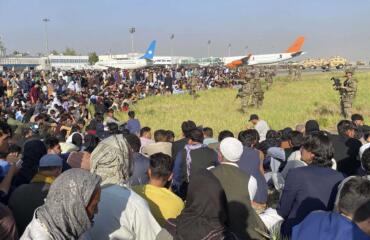
Gentrification and high-rise apartments are swelling the population the inner city electorate of Wills. PIC: Amber Ziye Wang
Long held by Labor, Wills was once the seat of former Labor Prime Minister Bob Hawke. Labor has only lost Wills once — in 1993, to Independent Phil Cleary.
Labor currently holds Wills with a margin of 15.2 per cent. But it’s not considered to be a safe seat, due to the retirement of long-term sitting MP Kelvin Thomson and the Greens making headway in the fast gentrifying area. Added to that is the fact that the Liberal Party have canvassed a preference deal with the Greens (which the Greens have rejected).
A bitter Labor pre-selection battle has seen Peter Khalil, a former SBS executive and international security advisor to esrtwhile Prime Minister Kevin Rudd, now carrying the hopes of the party.
Mr Khalil, of Egyptian background, believes his migrant origins will help him win the support of voters in the culturally diverse area. He’s expected to campaign hard on Labor’s core issues of health, education and jobs.
Bell Street, in Coburg, is considered a geographical point at which Labor and Greens voters generally divide, with an older population north of the major arterial road favouring the former and younger voters in the trendy and increasingly expensive southern suburb of Brunswick drawn moreso to the latter.
The Greens’ candidate is City of Moreland Mayor Samantha Ratnam, of Sir Lankan background, who is looking to unseat Labor with policies on issues such as housing affordability and unemployment as the northern areas of the seat are hit hard by the decline in manufacturing.
Bell Street, in Coburg, is considered a geographical point at which Labor and Greens voters generally divide, with an older population north of the major arterial road favouring the former and younger voters in the trendy and increasingly expensive southern suburb of Brunswick drawn moreso to the latter.
One of the most multicultural seats in the country, Wills boasts a demographic in which about 40 per cent of households are bilingual. The 2011 Census shows that almost four-in-10 residents were born overseas, deriving mostly from Italy, Greece, India, Lebanon and Turkey.
On May 28, violence erupted on the streets of Coburg after an anti-racism rally, with clashes between anti-racism protestors and anti-Islam groups. Cr Ratnam had been scheduled to address the rally — Moreland Says No to Racism — but withdrew due to safety concerns. Mr Khalil was not officially invited to the rally due to the Labor Party’s hardline stance on the offshore detention of asylum seekers.
Despite the clashes, violent scenes on the streets of Wills are unusual. The extremely diverse — and vibrant — nature of the area is usually regarded as one of its strengths, reflected in schools such as Brunswick Secondary College, which draws students from more than 50 nationalities.
Even so, there remain challenges. The acting principal of the school, Heather Secomb, says the Coalition government’s refusal to continue with current levels of funding for public schools has put a range of support programs “under threat”.
“Our support for disadvantaged students, for example, those who speak English as their second language or have learning difficulties, will be in question if funding is cut,” said Ms Secomb, referring to programs such as “Homework Club”, where students in need get help with school work in specific subject areas.

“The amount of funding that’ll be pulled out of Victorian education would be very significant, and we are very concerned,” she added.
Schools funding is emerging as a central election battleground. The Coalition has promised to give $1.2 billion for needs-based school funding between 2018-2020. Prime Minister Malcolm Turnbull has argued that more funding has not delivered better educational outcomes and that teacher quality is far more important. Labor has promised $4.5 billion between 2018-19.
Parts of Wills have experienced a dramatic change in demographics in recent years with students and well-paid professionals flocking to suburbs such as Brunswick in increasing numbers.
Many are attracted by Sydney Road’s vibrant café and restaurant culture, while Brunswick is an attractive choice for home ownership with its close proximity to the CBD. The area has recently seen rapid population growth as significant residential developments, mainly high-rise apartment blocks, take shape.
Some community leaders, however, have voiced concerns over what they have described as “developers’ greed” and a proliferation of apartment towers. They argue that infrastructure and public transport in Wills are struggling to keep up with such growth.
Brunswick Residents Network spokesman Nic Maclellan and the deputy convenor of the Moreland Bicycle User Group, Ross Millward, believe funding for public amenities such as open spaces and transport facilities is “inadequate”.
“The conservative government would only fund roads but not infrastructure,” said Mr Maclellan, referring to recent proposals including the now-abandoned East West Link – an 18-kilometre tollway project dubbed “scandalous” by exiting Labor MP Thomson.
Mr Millward agrees: “We need more Commonwealth funding for sustainable transport, while currently millions of dollars worth of megaprojects are mostly profiting motor vehicles. I think in the federal point of view, driving is being prioritised over riding, walking and trams for residents.”
► A version of this story also appears at Unipollwatch.


